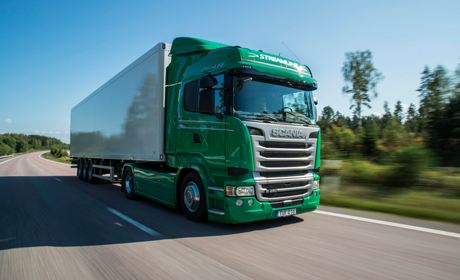
Scania automates and streamlines its condition monitoring with SPM vibration monitoring unit
Scania Industrial Maintenance, which is responsible for the preventive maintenance in all Scania production facilities in Sweden, has chosen to partner with SPM in developing a new vibration monitoring unit.
In cooperation with SPM, Scania Industrial Maintenance has tested the newly developed vibration monitoring unit Intellinova® Parallel MB. The goal is to improve machine availability for the manufacture of machined components for Scania's range of engines, gearboxes, trucks and buses.
The vibration monitoring unit is suitable for installation on critical machines, for example, various applications including machine tools to measure bearing condition and imbalance on machine spindles. Anders Ramström, Senior Maintenance Engineer, about Scania's strategy and long-term goals for its condition-based maintenance, and what it means for Scania: "Our long term strategy is to engage in more preventive and condition-based maintenance. We would like to avoid all types of emergency and unplanned stops; partly because it is more difficult to plan such jobs, but also because it is more expensive with equipment stoppages. A planned renovation of a spindle typically costs less than one third compared to if the spindle would break down."
Scania works with so-called machine ownership, meaning that operators are responsible for and have a deeper knowledge of one or more machines and call for maintenance when necessary. To encourage a sense of ownership and increase understanding as to why machine ownership and operator maintenance is important, Scania has held many operator trainings.
"We were looking to find a straightforward and reliable technology to have the machine itself tell the operator if something is not right. With a functioning and reliable vibration monitoring unit in place, we can save a lot of man-hours by not routinely performing route-based measurement but measure only when it’s called for," says Anders Ramström, and continues:" The point is not having to spend time performing manual measurements as long as machine condition is normal. The idea is that machines should not have to be stopped other than for planned maintenance. If readings raise an alarm, we do manual follow-up measurements while the machine is in operation, thus obtaining an indication as to what needs to be done. An alarm never shuts a machine down, and only qualified maintenance staff can reset alarms. The alarm levels in the vibration monitoring unit are set to a lower level than those in our portable instruments in order to leave time for us to do route-based measurements, analyze measuring results and plan maintenance."
 The vibration monitoring unit measures vibration levels on four channels in parallel. The device supports all vibration and shock pulse technologies, including the high definition technologies HD ENV® and SPM HD® for superior monitoring of vibration levels, lubrication status and bearing condition, and provides immediate condition evaluation. Intellinova Parallel MB can be run as an offline unit - where further analysis can be done using, for example, portable instruments on the unit’s isolated signal output - but is also easy to integrate into existing systems via Modbus RTU.
The vibration monitoring unit measures vibration levels on four channels in parallel. The device supports all vibration and shock pulse technologies, including the high definition technologies HD ENV® and SPM HD® for superior monitoring of vibration levels, lubrication status and bearing condition, and provides immediate condition evaluation. Intellinova Parallel MB can be run as an offline unit - where further analysis can be done using, for example, portable instruments on the unit’s isolated signal output - but is also easy to integrate into existing systems via Modbus RTU.
Initially, the vibration monitoring unit is installed in the engine plant in Södertälje, Sweden where the units have been field tested for over a year.
Scania operates in about 100 countries and has more than 42,000 employees. Scania Industrial Maintenance is a wholly owned subsidiary of Scania CV AB and one of the largest technical support production companies in the country with 900 employees and a turnover of approximately SEK 1.6 billion (2014).
